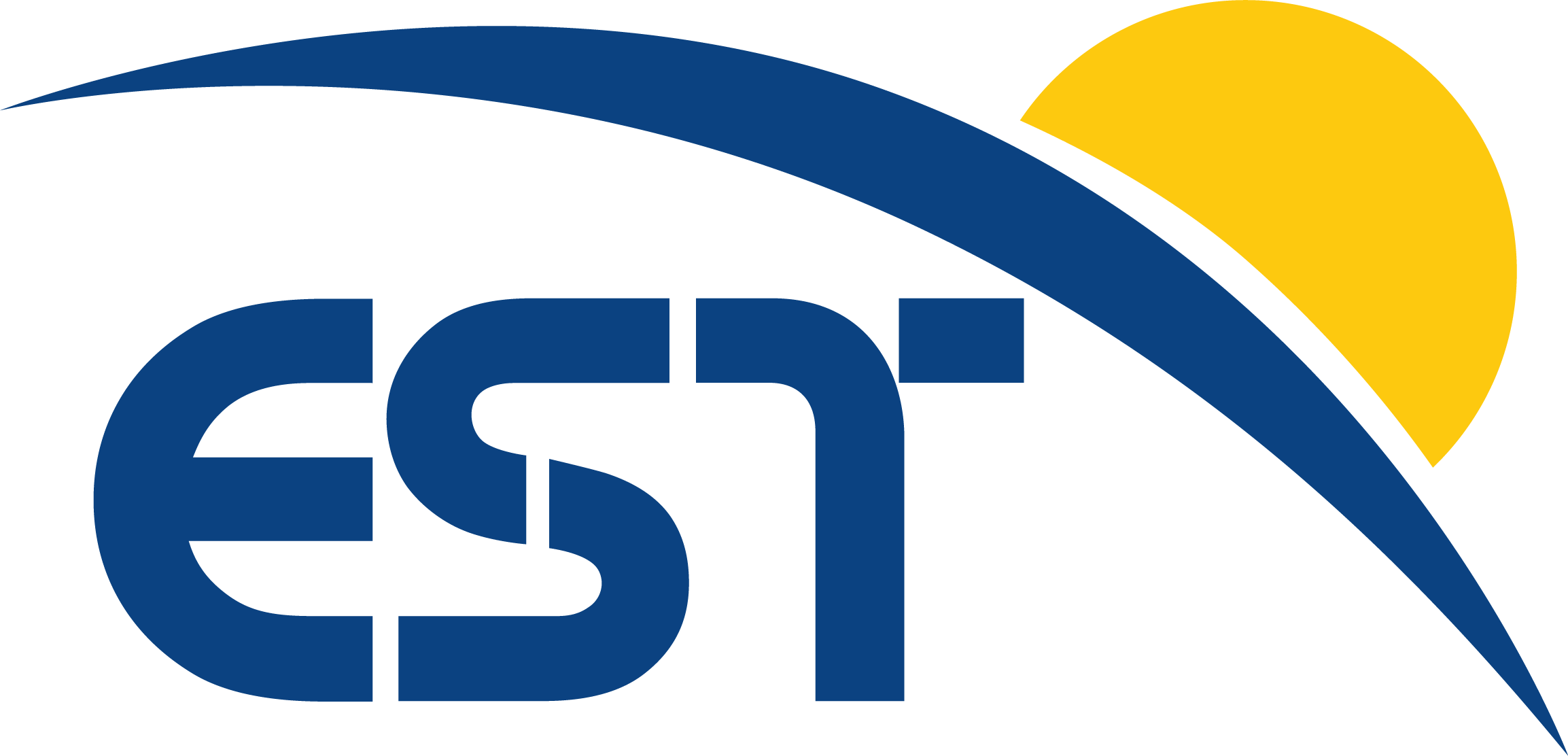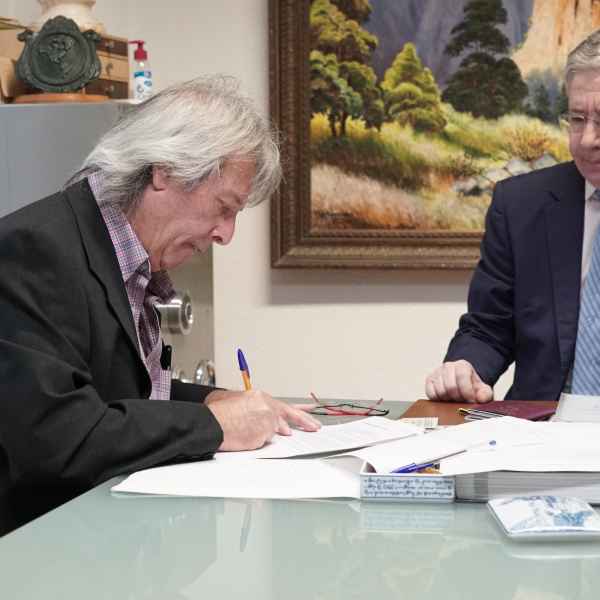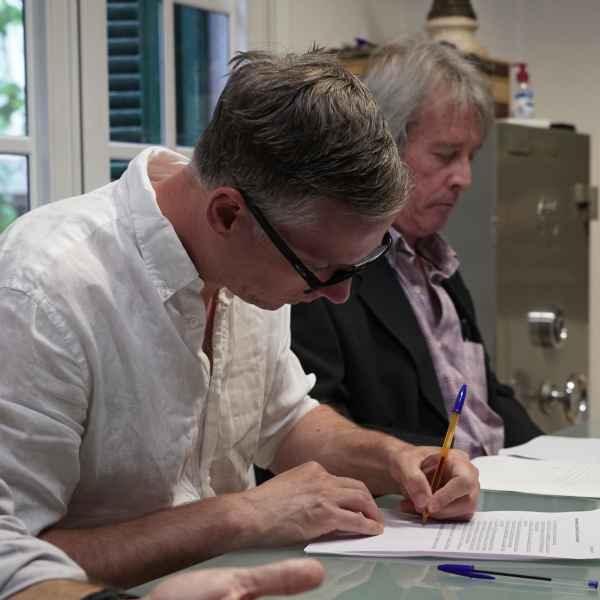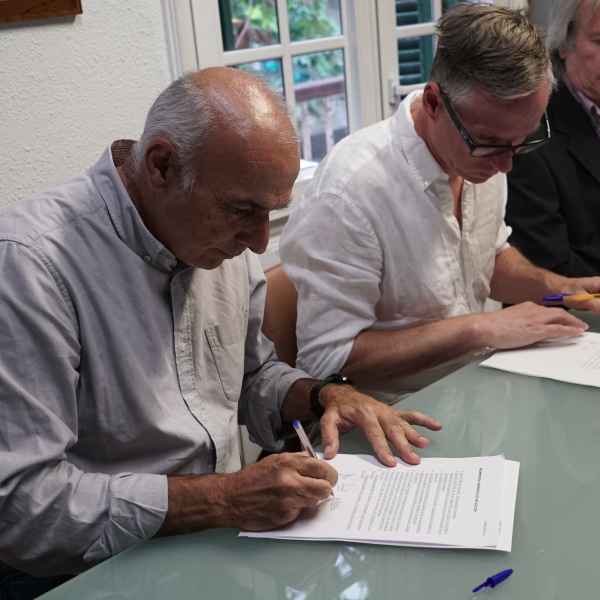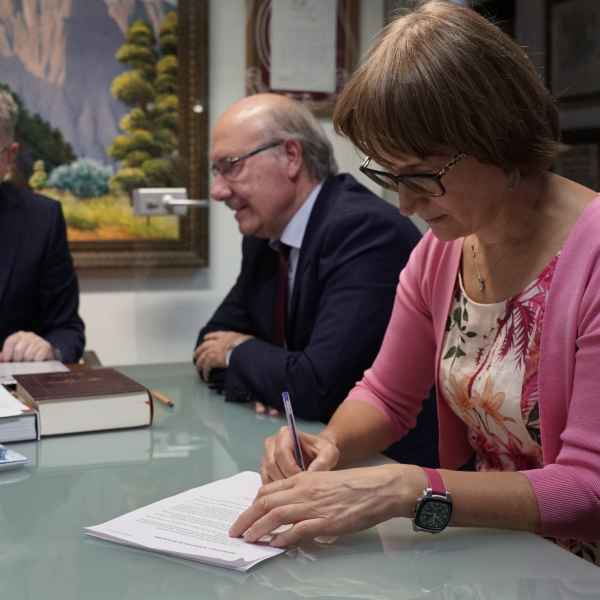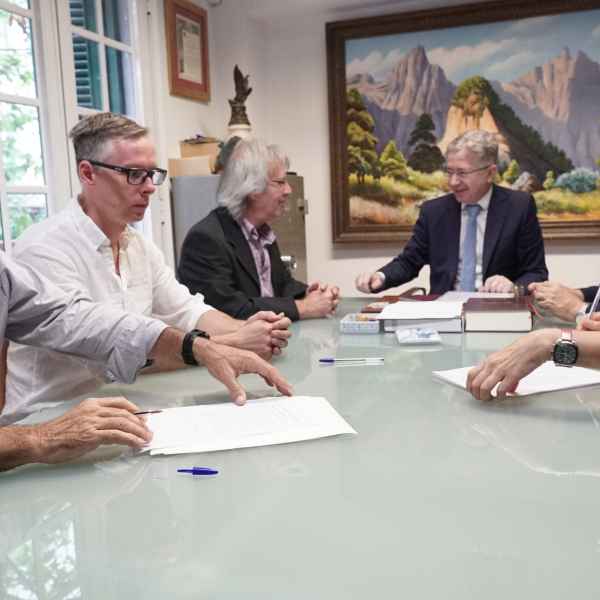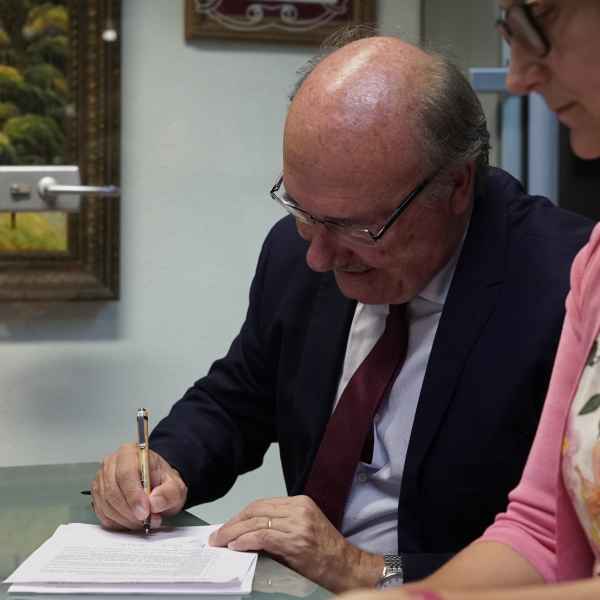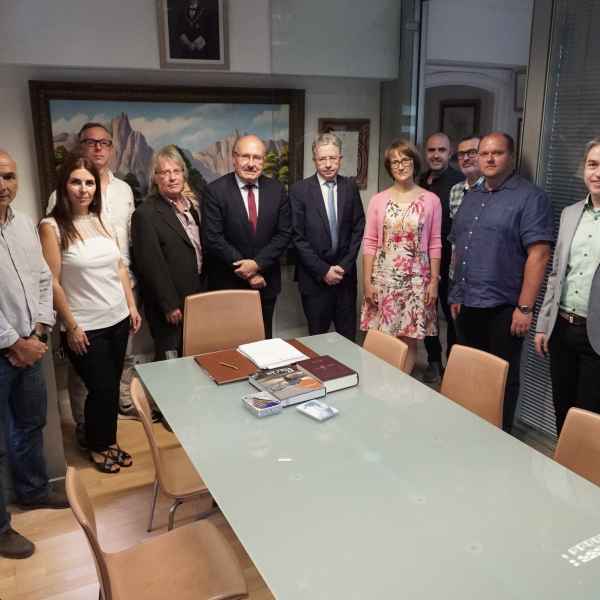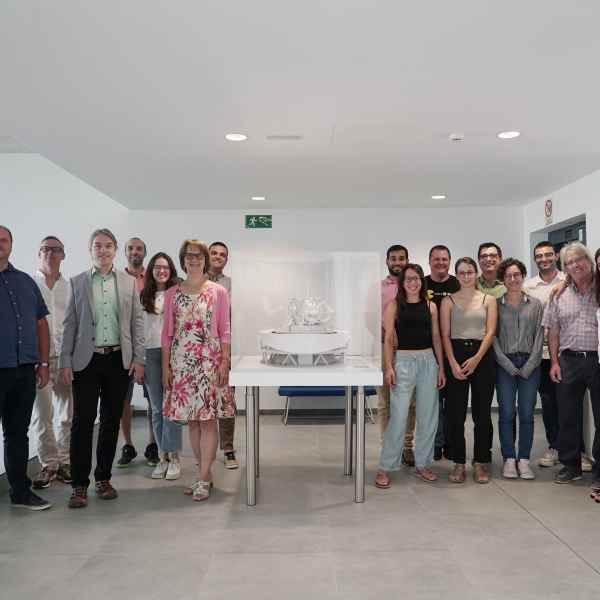9 institutions from 7 European countries signed the deed of the foundation that grants legal character to the project consortium and paves the way for the construction of the European Solar Telescope.
The institutions responsible for the creation of the entity that will lead the project to the next phase of development belong to the Czech Republic, Germany, Slovakia, Spain, Sweden, Switzerland and the United Kingdom.
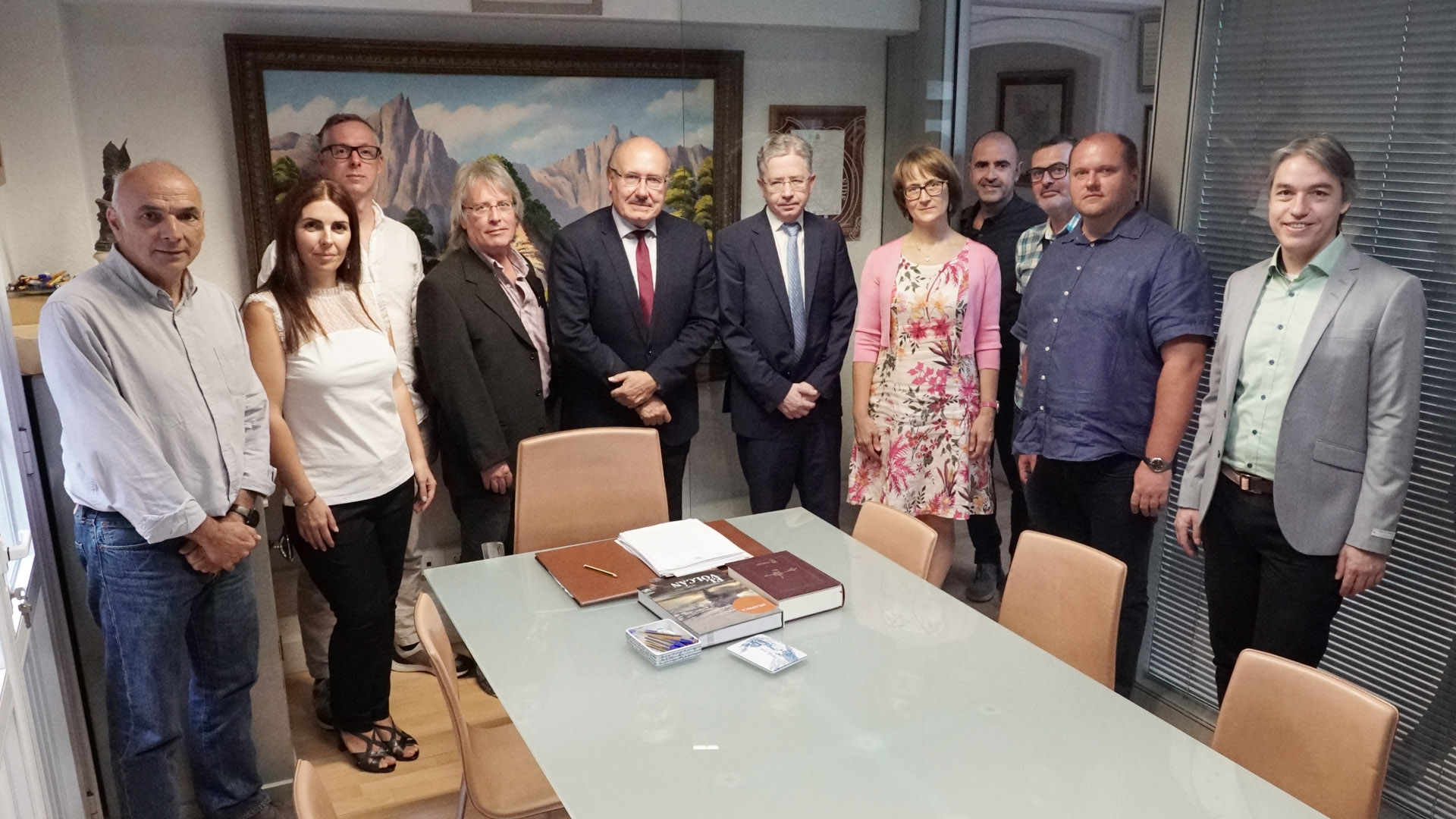 Representatives of the European institutions posing after the signing in Santa Cruz de Tenerife. From left to right: Manuel Nogales (CSIC), Alejandra Martín (IAC), Jorrit Leenaarts (Stockholm University), Manuel Collados (IAC), Rafael Rebolo (IAC), José Javier Soto (Notary), Svetlana Berdyugina (KIS and USI-IRSOL), Anselmo Sosa (IAC), Sergio González (KIS), Peter Gömöry (AISAS), and Philippe Bourdin (Graz University). Credit: IAC.
Representatives of the European institutions posing after the signing in Santa Cruz de Tenerife. From left to right: Manuel Nogales (CSIC), Alejandra Martín (IAC), Jorrit Leenaarts (Stockholm University), Manuel Collados (IAC), Rafael Rebolo (IAC), José Javier Soto (Notary), Svetlana Berdyugina (KIS and USI-IRSOL), Anselmo Sosa (IAC), Sergio González (KIS), Peter Gömöry (AISAS), and Philippe Bourdin (Graz University). Credit: IAC.
The preliminary design phase of the telescope, which was funded by the European Commission’s Horizon 2020 programme, has recently been completed. Now, the establishment of the EST Foundation marks a crucial milestone in advancing the project towards the construction phase. One of the primary objectives of the foundation is to create a European Research Infrastructure Consortium (ERIC), which will bring together the national ministries of the partner countries. The European Solar Telescope ERIC will be the legal entity responsible for overseeing all aspects of the construction and operation of this large research infrastructure.
The establishment of the foundation gives the participating institutions decision-making power over all future scientific, technological and industrial aspects of the project.
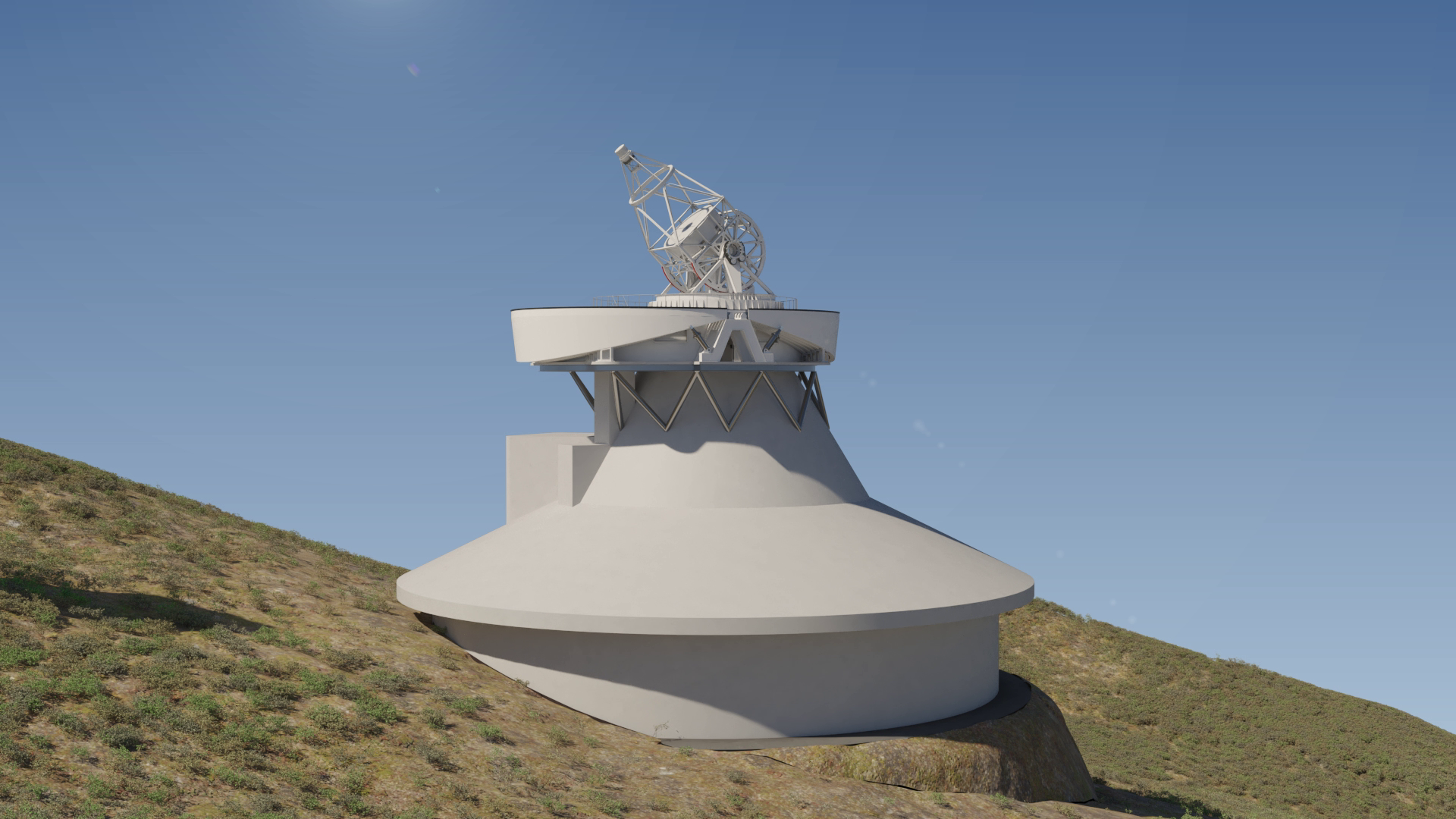 European Solar Telescope recreation. Credit: IDOM.
European Solar Telescope recreation. Credit: IDOM.
An unprecedented technological challenge
The European Solar Telescope is set to become the largest solar telescope ever built in Europe. With its 4.2-meter primary mirror, state-of-the-art technology, and specialised instrumentation suite, EST will provide astronomers with an unrivalled tool for observing the Sun. This solar telescope will be constructed in the Roque de los Muchachos Observatory, located on the island of La Palma (Spain) and renowned worldwide as a top-tier site for astronomical observations.
EST was included on the European Strategy Forum on Research Infrastructures (ESFRI) Roadmap in 2016 and is therefore considered a strategic research infrastructure for Europe. Also, the most recent Astronet Infrastructure Roadmap 2022-2035 recognizes EST as one of the three top priorities among mid-sized ground-based astronomical infrastructures, with first light expected by 2030. One of its primary objectives is to improve our understanding of the Sun by observing its magnetic fields in unprecedented detail. EST will be able to uncover signals currently hidden in the noise and reveal the existence of unknown, tiny magnetic structures. By studying the magnetic and dynamic coupling of the solar atmosphere, EST will provide valuable insights into the mechanisms underlying solar flares and coronal mass ejections. These phenomena determine the so-called space weather, which has a strong influence on our technological society.
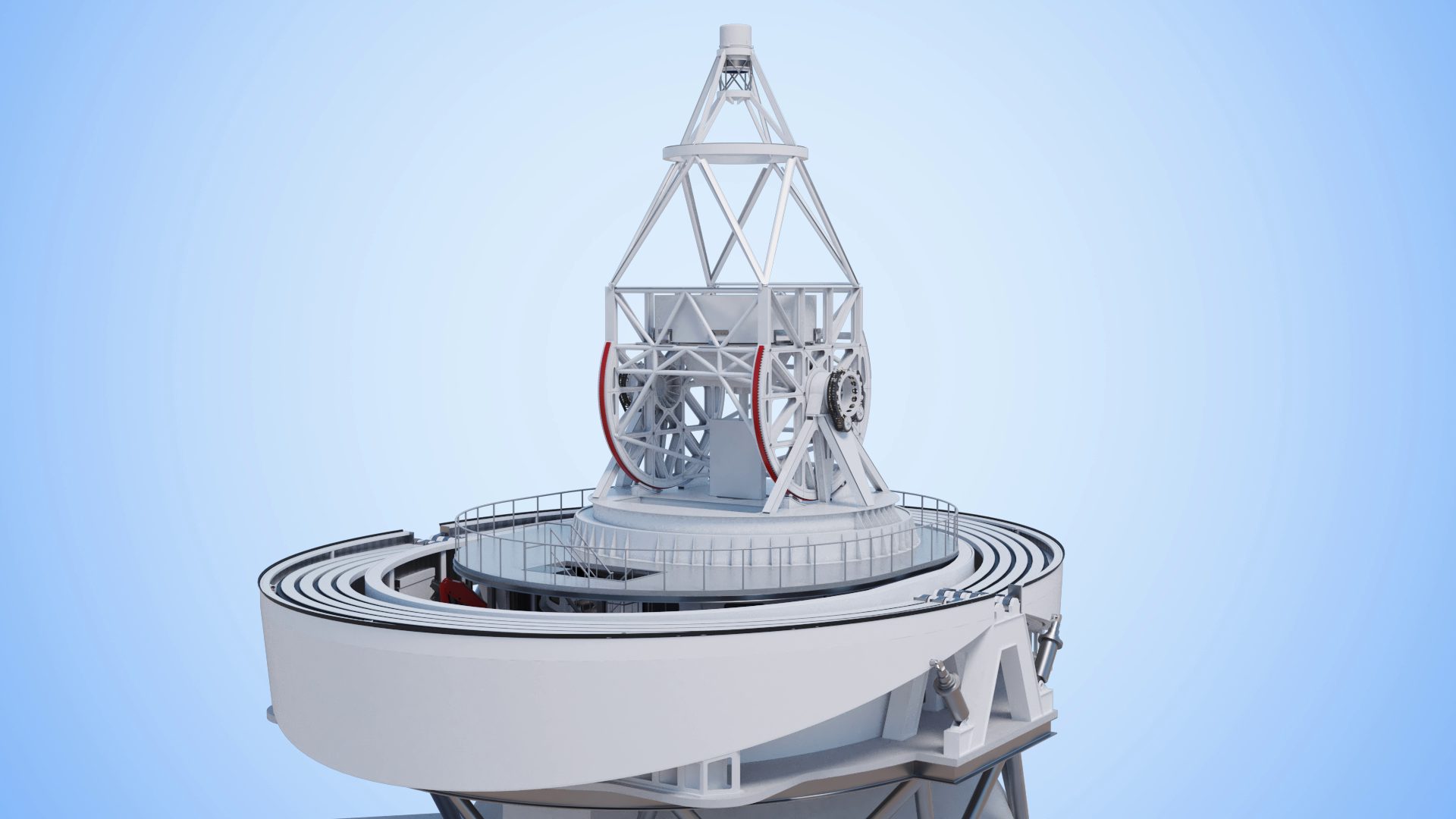 Telescope structure. Credit: IDOM.
Telescope structure. Credit: IDOM.
The optical configuration and instrumentation of EST have been meticulously designed to capture the interactions between the different atmospheric layers of the Sun. Additionally, a comprehensive set of instruments will be installed to enable simultaneous observations across multiple wavelengths. This unique capability will give EST a higher efficiency compared to existing or future telescopes, whether ground-based or space-borne.
The largest solar telescope in Europe is a technological challenge that, once built, will keep Europe at the forefront of solar physics research and instrument development.
More information about the project: www.est-east.eu
Members of the EST Foundation
Astronomický Ústav AV ČR, V. V. I. (Czech Republic)
Astronomický ústav Slovenskej Akadémie vied (Slovakia)
Agencia Estatal Consejo Superior de Investigaciones Científicas - Instituto de Astrofísica de Andalucía (Spain)
Instituto de Astrofísica de Canarias (Spain)
Leibniz Institut für Sonnenphysik KIS (Germany)
Max Planck Institute for Solar System Research (Germany)
Stockholms Universitet (Sweden)
Università della Svizzera italiana - Istituto Ricerche Solari Aldo e Cele Daccò (Switzerland)
University of Sheffield (UK), representing the United Kingdom Universities Consortium (Aberystwyth, Durham, Exeter, Glasgow, Sheffield and Queen's University Belfast)
Read the news in other languages
Astronomický Ústav AV ČR, V. V. I. (Czech)
“Sedm evropských zemí spojilo své síly na podporu výstavby Evropského slunečního dalekohledu”
Astronomický ústav Slovenskej Akadémie vied (Slovak)
“Sedem európskych krajín sa spojilo pre podporu výstavby Európskeho slnečného ďalekohľadu”
Agencia Estatal Consejo Superior de Investigaciones Científicas (Spanish)
“El CSIC y el IAC participan en la creación de la Fundación Canaria Telescopio Solar Europeo”
Instituto de Astrofísica de Andalucía (Spanish)
“El CSIC y el IAC participan en la creación de la Fundación Canaria Telescopio Solar Europeo”
Instituto de Astrofísica de Canarias (Spanish)
“El CSIC y el IAC participan en la creación de la Fundación Canaria Telescopio Solar Europeo”
Leibniz Institute für Sonnenphysik KIS (German)
“KIS unterzeichnet als Mitbegründer die Stiftung für das Europäische Sonnenteleskop”
Max Planck Institute for Solar System Research (German)
“Sieben europäische Länder bündeln ihre Kräfte zum Bau des European Solar Telescope”
Università della Svizzera italiana - Istituto Ricerche Solari Aldo e Cele Daccò (English)
“USI signs as a co-founder of the European Solar Telescope Foundation”
United Kingdom Universities Consortium (English)
- Aberystwyth University “Aberystwyth physicists collaborate on solar telescope project”
- Durham University “Building Europe’s largest solar telescope”
- Queen's University Belfast “UK and Europe join forces for construction of largest ever European Solar Telescope”
- University of Exeter “Exeter to support construction of largest ever European Solar Telescope”
- University of Glasgow “UK and Europe join forces for construction of largest ever European Solar Telescope”
- University of Sheffield “UK and Europe join forces for construction of largest ever European Solar Telescope”
Image gallery
Error

